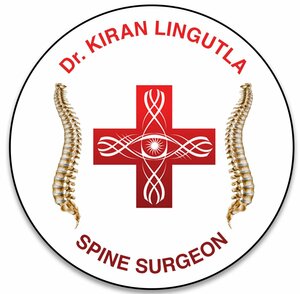SPINAL ORTHOSES
(Cervical Collars & Lumbar Belts)
1.What is a Spinal Orthosis ?
A Spinal Orthosis is a force system device that can provides support, restricts movement and also can treat deformities of the spine and its main purpose is to Reduce pain, Promote healing and Prevent further injury.
2. What are the most common types of spinal collars used?
Spinal Orthosis commonly used can be classified according to the region of the spine it immobilises (Cervical, Cervicothoracic, Thoracolumbar and Lumbosacral) and according to the material used (Soft, Semi-rigid and Hard). Most commonly used are Cervical Collars and Lumbar Belts.
3.When Should one use soft cervical /neck collar ?
Soft collars are made of foam and other soft materials. It provides minimal restriction of neck movements and is used commonly in neck pain due to cervical spondylosis and neck strains. It allows the soft tissues to rest, provides warmth to muscles and is a kinaesthetic reminder to the patient to avoid extremes of neck movement.
They are typically used for 4-6 weeks till the neck pain reduces and then neck movements / exercises should be commenced to strengthen the neck muscles and which in turn provides long term pain relief. They should NOT be used continuously for longer duration as it weakens the neck muscles and in turn causes more pain.
Remember Movement is the Ointment !!!
4. When are Semi-Rigid and Rigid ( Hard ) Cervical collars used ?
Semi-Rigid cervical collars are a combination of soft and hard materials and offer a balance of support and comfort.
They are usually used in stable cervical spine fractures, Immobilisation and transport of cervical spine injury patients following a road traffic/ vehicular accident and also in patients who have had cervical spine fusion surgeries. Hard Cervical Collars / Cervico -Thoracic orthosis are made out of rigid material and offer greater movement restriction and more stability to the cervical spine and are used in Unstable Cervical spine fractures and also following cervical spine fusion surgery.
They are more complex devices and should be used under strict guidance and observation of a specialist doctor or trained health care personnel.
5.What are Lumbar Belts ( Lumbosacral orthoses) and in which disorders they are used ?
A lumbar orthosis, also known as a lumbar support or back brace, is a device that is worn around the lower back to provide support and stability to the lumbar spine/ lower back. It is often used to treat acute or chronic low back pain, improve posture, and reduce the risk of further injury. Lumbosacral Orthosis work by fluid compression of the abdominal cavity and restricts gross body motion.
Lumbar orthoses are available in a range of styles, including those that are worn around the waist, those that are worn over the shoulder, and those that are worn around the thigh. Some lumbar orthoses are designed to be worn all day, while others are only worn during activities that put extra strain on the lower back, such as lifting or sports.
There are several types of lumbar orthoses available, including:
• Lumbar support belts: These are often worn to provide temporary relief from lower back pain or to support the lower back during physical activity.
• Lumbar braces: These are more rigid devices that are worn to provide long-term support and stabilization of the lumbar spine. They may be prescribed to people with spinal fractures, degenerative disc disease, or other conditions that cause instability in the lower back.
• Lumbar corsets: These are similar to lumbar braces, but they are often more flexible and may be made from softer materials. They are prescribed to people with mild to moderate lumbar instability or to those who need support during the healing process after surgery.
6. When should Spinal Orthoses ( Collars and belts ) NOT be used ?
• In spinal cord injury patients who are unable to sit or stand and are in bed only. Belts should be avoided as they cause skin problems.
• Impaired mental status.
• Impaired skin sensation.
• Noncompliant patient.
• Skin Rashes or Wounds.
7. When are Spinal Orthoses used in children?
Non-Operative correction of Spinal Deformities like Scoliosis, Kyphosis and Stress fracture of Pars (Spondylolysis).
Post Surgical Immobilization after Scoliosis, Kyphosis and Spondylolisthesis Spine Surgery.
It is always important to consult with Orthopaedic Spine Surgeon before using any type of advanced medical device, including a lumbar belt or cervical collar, to ensure that it is safe and appropriate for use.
Take Home Message
• Remember Movement is the Ointment So use the Muscle or Risk Losing the Muscle !!!
- KL SPINE SURGEONRead more from Orthopedic Spine Surgeon in Hyderabad, Dr. Kiran Kumar Lingutla
Consent form for Orthopaedic Spine Surgery :- Lumbar and Cervical Spine Surgery.
Post-Operative Instructions for Patients after Spine Surgery - Dr. Kiran Kumar Lingutla


